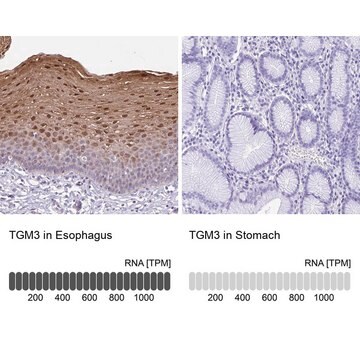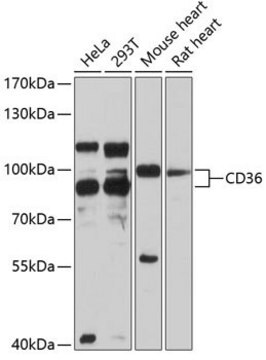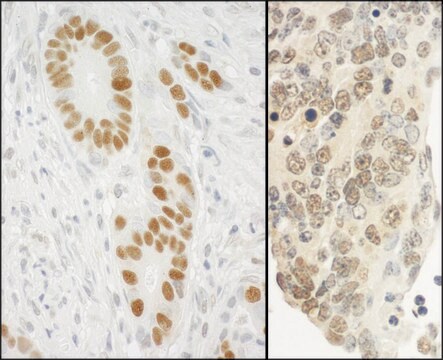Key Documents
SAB4200073
Anti-Transglutaminase-2 (C-terminal) antibody produced in rabbit
~1.5 mg/mL, affinity isolated antibody
Synonim(y):
Anti-C polypeptide, protein-glutamine-gamma-glutamyltransferase, Anti-G-alpha-h, Anti-TG2, Anti-TGC, Anti-TGM2
About This Item
Polecane produkty
pochodzenie biologiczne
rabbit
białko sprzężone
unconjugated
forma przeciwciała
affinity isolated antibody
rodzaj przeciwciała
primary antibodies
klon
polyclonal
Postać
buffered aqueous solution
masa cząsteczkowa
antigen ~78 kDa
reaktywność gatunkowa
human
opakowanie
antibody small pack of 25 μL
stężenie
~1.5 mg/mL
metody
immunohistochemistry: 5-10 μg/mL using formalin-fixed and paraffin embedded human placenta
immunoprecipitation (IP): 15-30 μg using human placenta extracts
indirect immunofluorescence: 2-4 μg/mL using U87 cells
western blot: 1-2 μg/mL using U87 cell extracts
numer dostępu UniProt
Warunki transportu
dry ice
temp. przechowywania
−20°C
docelowa modyfikacja potranslacyjna
unmodified
informacje o genach
human ... TGM2(7052)
Opis ogólny
Zastosowanie
- immunoblotting
- immunoprecipitation
- immunofluorescence
- immunohistochemistry
Działania biochem./fizjol.
Postać fizyczna
Oświadczenie o zrzeczeniu się odpowiedzialności
Nie możesz znaleźć właściwego produktu?
Wypróbuj nasz Narzędzie selektora produktów.
Kod klasy składowania
10 - Combustible liquids
Temperatura zapłonu (°F)
Not applicable
Temperatura zapłonu (°C)
Not applicable
Certyfikaty analizy (CoA)
Poszukaj Certyfikaty analizy (CoA), wpisując numer partii/serii produktów. Numery serii i partii można znaleźć na etykiecie produktu po słowach „seria” lub „partia”.
Masz już ten produkt?
Dokumenty związane z niedawno zakupionymi produktami zostały zamieszczone w Bibliotece dokumentów.
Nasz zespół naukowców ma doświadczenie we wszystkich obszarach badań, w tym w naukach przyrodniczych, materiałoznawstwie, syntezie chemicznej, chromatografii, analityce i wielu innych dziedzinach.
Skontaktuj się z zespołem ds. pomocy technicznej








